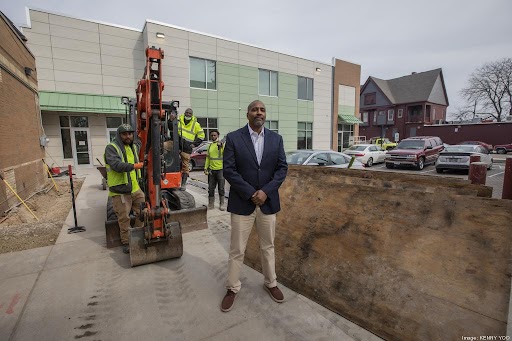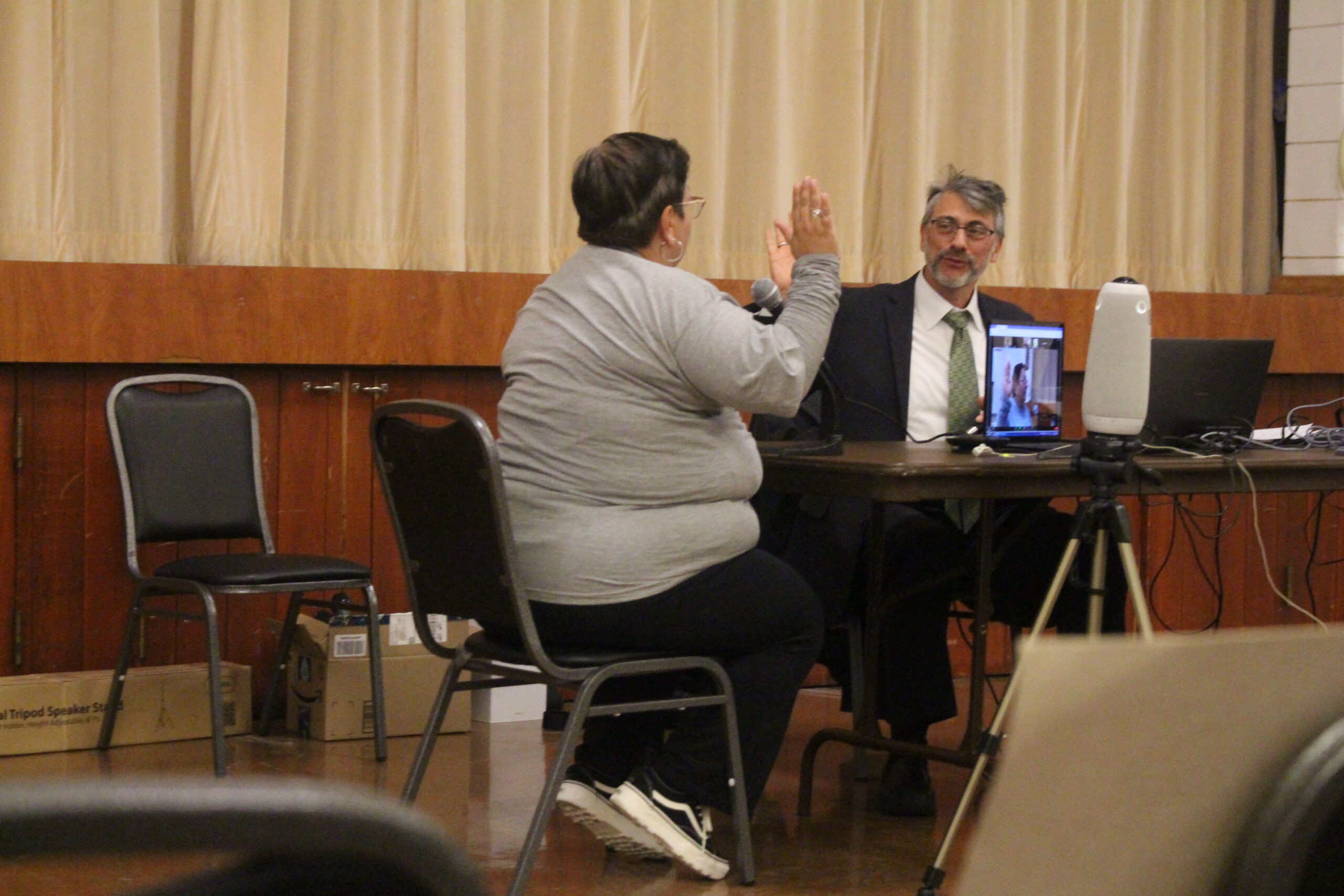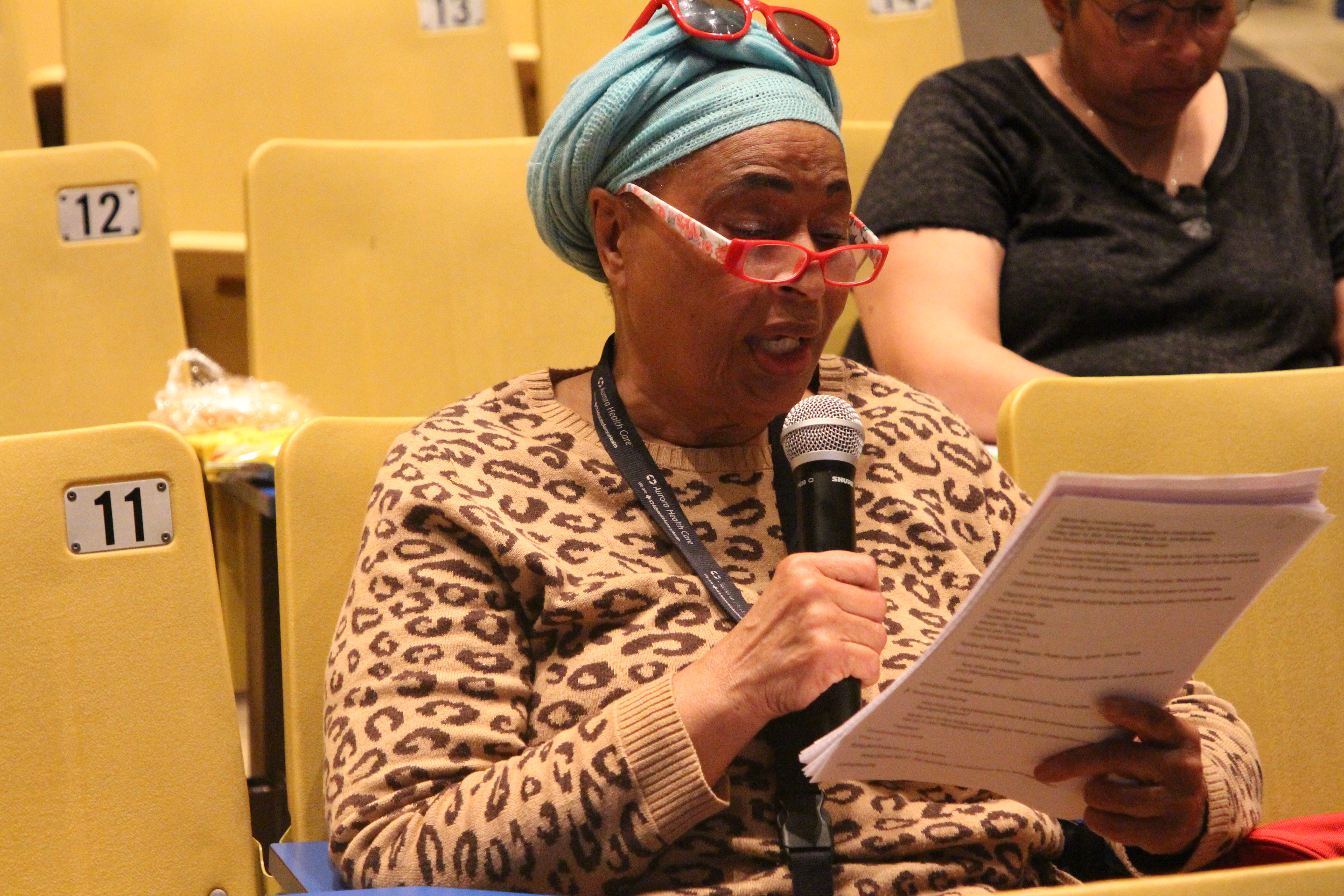
Creating Sustainable Change For Communities, By Communities
Photo Credit: Walnut Way
Walnut Way, Community Change Grants and how their benefits can be leveraged to reduce environmental disparities in Milwaukee’s Northside
Clean energy dollars are reaching Milwaukee’s most underserved communities thanks to federal funding through the Inflation Reduction Act (IRA). With over 20 years of experience as an environmental nonprofit in Milwaukee’s northwest side, Walnut Way Conservation Corp. has established itself as a trusted resource for Lindsay Heights residents and statewide organizations through its commitment to creating healthier, safer, and more prosperous communities.
One of the ways this will be done is by the creation of a one-megawatt microgrid within the Lindsay Heights community. This will support the integration of clean energy into the electricity grid and protect grid reliability.
These place-based investments will be focused on initiatives led by the community members of Lindsay Heights, ensuring they are responsive to the community. They are designed to deliver on the transformative potential of IRA for communities most adversely and disproportionately impacted by climate change, legacy pollution, and historical disinvestments.
Antonio Butts, executive director of Walnut Way, said, “Over the past two years, significant work has been done in Milwaukee to address energy burden, energy affordability, and sustainability projects in underserved communities. This work has involved engagement in utility rate cases with the Public Service Commission of Wisconsin, cross-sector collaborations with local grassroots organizations, and partnerships with various state agencies.”
Through the EPA’s new Environmental and Climate Justice Community Change Grants, Walnut Way has the opportunity to move forward with its multi-million dollar proposal intended to advance sustainable change. The Community Change Grants, which were developed as a comprehensive response to pressing environmental concerns, leverage the collective strength of Walnut Way and its partner organizations by deploying a budget of approximately $20 million to be distributed over 36 months. Walnut Way’s proposal is specific to Milwaukee’s Lindsay Heights Neighborhood with the goal of increasing education, capacity building, governance participation, and environmental stewardship. The goal is to reduce the energy burden within the community and promote renewable energy sources among residents.
Overall, the project aims for a holistic transformation of urban infrastructure and the creation of a sustainable, equitable community.
Community Impacts: Direct Financial Assistance, Energy Independence, and Home Weatherization
“This grant opportunity is designed to fund community-driven projects that address environmental and climate challenges and enhance meaningful involvement in government processes related to environmental justice,” said Butts.
For Walnut Way, this starts with direct financial assistance to Lindsay Heights residents. The budget for the proposal outlines $3 million in direct assistance over three years to alleviate financial burdens associated with the cost of food, medical supplies, energy-efficient appliances, and utility bills.
Walnut Way has budgeted an additional $2 million to extensively weatherize 300 homes in the community. Weatherization services include upgrading appliances such as stoves and refrigerators to more energy-efficient models, installing heat pumps, and updating roofing in preparation for solar panel installation.
More notably, the initiative has allocated $1.5 million to implement a 0.5 MW microgrid for subscription-based renewable energy access. This project has been created to mitigate the high electricity bills and disconnection performed by the local utility company and will be done in partnership with Watts Up Way, an apprenticeship program born out of Walnut Way to support a clean energy transition, enhance energy independence within the community, and promote clean energy jobs.
To reduce the energy burden of residents, Walnut Way has budgeted $2 million to weatherize 300 homes in the community.“Our goals are ambitious,” Butts said, “And in order to complete these goals, it’s going to take a collective effort. Our objective is to sustain our engagement and ensure that generations to come have a voice that directly impacts our well-being and quality of life.”

Photo Credit: Walnut Way
The Importance of Community-Led Transitions to Energy Justice
A critical element of this effort is the Resilient Resident Civic Engagement Compensation Program. This innovative program by Walnut Way provides a strategy for community members to gain recognition and compensation for their contribution to the project, providing a way to earn additional income and engage in civic activities.
The objective of this is to provide an avenue for transparent two-way communication, leadership, and adjustment between government entities and constituents to build trust within the community. For Walnut Way, community engagement has always been the foundation for achieving sustainable change. This is apparent in conversations among Walnut Way and Lindsay Height’s residents when asked about their vision for the community moving forward.
The desire for change among residents is not scarce, but the means to make improvements have been.
“The reality is that we need to take advantage of all available resources,” Butts admitted, and “especially listening to our community members. They live here. They know what they need to be successful.”
He continued, “Being held accountable by the residents requires us to be aligned, coordinated, and to already have established a baseline of accomplishments for us to earn their trust.”
“Working alongside residents enables us as an organization to respond with confidence to aid the community moving forward,” Butts said.
Emmonia Barnett, who has lived in Lindsay Heights for over ten years, shared, “My vision is a community that is empowered to look after itself.”
Her neighbor, Ammar Nsoromoa, echoed Barnett’s wishes and added, “I would like the community to be beautiful. You don’t see trash. You don’t see people in poverty. The community is self-sustained. We take care of one another. The businesses serve the locals. We feed each other with food from grocery stores in our neighborhood. We want to be actively a part of what’s going on.”

Photo Credit: Walnut Way
EPA Grant deadlines, technical support, and how to bring change to your community
While Walnut Way is still in the preliminary stages of the grant application, the Notice of Funding Opportunity is open now through November 21, 2024, with applications accepted on a rolling basis. Additional support for organizations and communities seeking technical assistance with grant eligibility and technical writing will be provided through the EPA’s Environmental Justice (EJ) Thriving Communities Technical Assistance Centers (TCTAC). The creation of these centers was a direct response to feedback from overburdened communities and organizational leaders who have encountered barriers to maximizing the full benefits of available federal funds.
There are the two TCTACS serving Region 5 organizations and communities that have been disproportionately impacted by environmental hazards. As designated by the EPA, Region 5 spans 35 tribal lands and six states–Illinois, Indiana, Michigan, Minnesota, Ohio, and Wisconsin. The Great Lakes, led by the University of Minnesota, and Blacks in Green (BIG) Justice, led by a partnership of community-based organizations in Illinois, are the two TCTACs that serve Region 5. Interested applicants can submit an intake form detailing their needs to either center to get help with overcoming barriers to accessing funding from the Community Change Grants.
“Our objective is to sustain our engagement and ensure that generations to come have a voice that directly impacts our well-being and quality of life,” Butts said.
He also noted that the Community Change Grants program has the capacity to expedite this process for the residents of Lindsay Heights while allowing the community to lead in its own solution development towards the clean energy transition.
